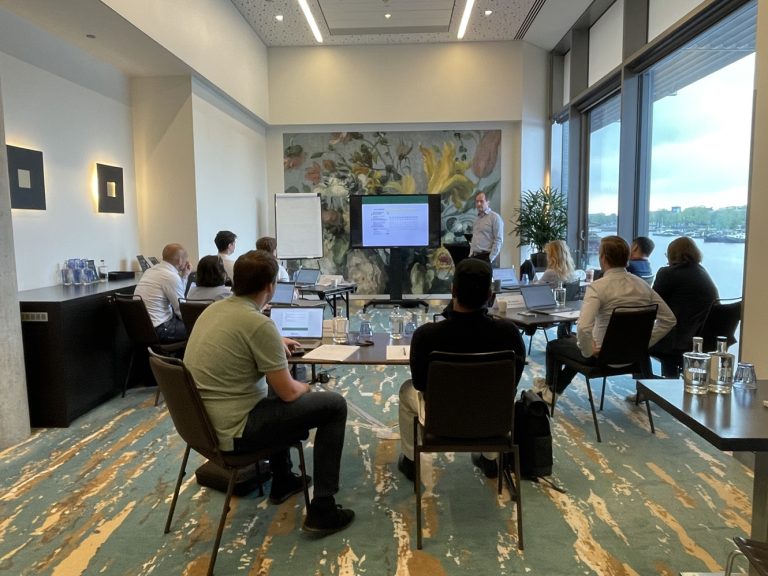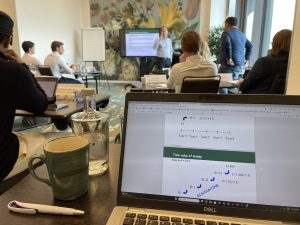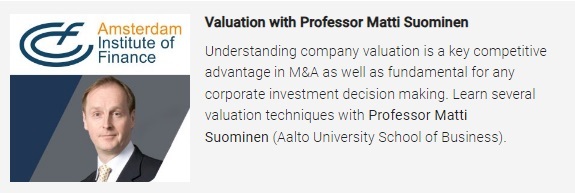The art and science of valuation: Key insights on how to determine value

Last May, a diverse group of professionals gathered at the Amsterdam Institute of Finance to embark on a three-day journey into the complex world of business valuation. Led by Professor Matti Suominen from the Aalto University School of Business in Helsinki, participants of varying backgrounds, including legal, finance, general management, and M&A, united with a common goal: mastering the art of determining the value of a business.
Day 1: Laying the foundation
The program kicked off with introductory sessions designed to build a strong foundation. Participants were introduced to fundamental financial statements—balance sheets, cash flow statements, and income statements. Professor Suominen emphasized the critical role of cash flows. “Revenues can be manipulated,” he explained, highlighting practices like ‘dressing up the bride’ where companies artificially boost earnings. In contrast, cash flows provide a true reflection of a company’s financial health and are crucial for investors and acquiring companies.
Understanding key concepts
The first day’s lessons also delved into essential valuation concepts:
Book Value vs. Market Value: Understanding the difference between the money invested in a business (book value) and how the market evaluates it (market value).
Free Cash Flows: The lifeblood for investors, as they represent the funds available to pay investors and are vital before making acquisition decisions.
Investment decisions and present value
One of the program’s focal points was how to make investment decisions that enhance shareholder value. “You invest an amount today and expect it to be worth more in the future”, Suominen explained, stressing the importance of future cash flows. He introduced the concept of present value, showing how to discount future cash flows to their current value—a critical step in comparing investments.
Compounding and Warren Buffett
Suominen used Warren Buffett’s success to illustrate the power of compounding. “Buffett’s wealth is a result of consistently high returns and the compounding effect over 60 years”, he noted, highlighting how reinvesting earnings can generate substantial additional earnings over time.
Applying the concepts
The latter part of the day was dedicated to practical applications. Participants tackled business cases involving capital budgeting—deciding whether long-term investments like new equipment or facilities are worthwhile. They learned to calculate Net Present Value (NPV), adjusting cash flows for time and risk, enabling them to compare different investment opportunities.
Dealing with complexity
As the day progressed, more complex factors were introduced, including interest rates, credit conditions, opportunity costs, and overhead costs. Psychological aspects, such as the sunk cost fallacy – where people continue investing in a losing proposition because of previous investments – were also discussed.

Real-world Insights and fair value
Suominen shared real-world experiences, stressing the importance of simplifying complex analyses to avoid overwhelming stakeholders. He highlighted the importance of best and worst-case scenarios, ensuring that decisions can withstand the worst possible outcomes. The afternoon session covered fair value, used not only in M&A, but also for internal assessments, such as determining when to issue shares.
Multiples method and market efficiency
The day’s final topic was the multiples method, a staple in M&A valuation. Despite its challenges, such as finding comparable companies and dealing with stock price volatility, Suominen defended its reliability. “Markets are very efficient in principle”, he noted, underscoring that if comparable companies can be found, valuations based on multiples are generally dependable.
Conclusion: Cash is King
Throughout the program, one mantra stood out: “Cash is king.” For Suominen, the return on capital employed is the most telling figure, reflecting the true value and efficiency of a business. As participants wrapped up the first day, they left with a deeper understanding of the fundamental principles and practical applications of business valuation, ready to tackle more complex scenarios in the days to come.
Amsterdam Institute of Finance is knowledge partner of the M&A Community Belgium









